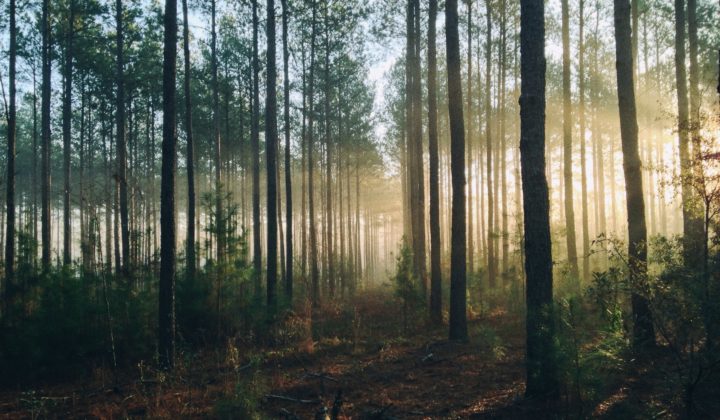Sustainability
Guidelines of the Senckenberg Gesellschaft für Naturforschung
Preamble
Senckenberg comprises both internationally active research institutes with natural history collections, and natural history museums in Frankfurt, Dresden and Görlitz. By conducting research in the field of geobiodiversity, and by transferring knowledge, we are committed to sustainable action in our research, in the conservation of our collections, and in our interaction with nature. We communicate our research results to a broad public through our natural history museums, a diverse exhibition portfolio, courses, popular scientific lectures, and publications in various media. In dialogue with society, business and politics, we contribute to the sustainable development of the earth. From our scientific results and the undeniable facts on global change, we have an obligation to point out the decline of, and threats to, biodiversity and the need for a more careful use of resources.
(Status: November 8, 2017)
As Senckenberg’s research focuses on the Earth system and its interrelationships, we have continued to collect comprehensive knowledge of the effects of man-made global change on the world’s biodiversity, ecosystems, and mankind, as well as the competence to communicate this knowledge to the public. But of course, we are also working on acting more sustainably ourselves – the first steps have already been taken in this regard.
Throughout Senckenberg, a sustainability officer coordinates and bundles the activities, and compiles sustainability reports (most recently 2020, only in german) based on the overarching sustainability guidelines adopted in 2017. At several locations, working groups of committed employees have formed to address the topic together.
An energy audit was carried out at all locations. The majority of the sites are now supplied with green electricity, or the switch is planned. At several locations, district heating is already used for heating. A self-commitment for all employees to refrain from flights less than 1000 km is in progress, the possibility of compensating unavoidable flights is currently being examined. Whenever vehicles need to be replaced in the sites’ fleets and the purpose of use permits, electric cars or hybrid vehicles are chosen. Sustainability requirements for the procurement of products and services were integrated into the procurement regulations.
Guidelines
Our understanding of sustainability primarily aims at the long-term preservation of natural resources in the interest of present and future generations. The sustainability guidelines of the Senckenberg Gesellschaft für Naturforschung do not reflect the status quo, but are to be understood as a vision of effective sustainability management in which the three sustainability dimensions of environmental protection, economic performance, and social responsibility are combined in such a way that decisions are permanently viable under all three aspects.
Sustainability highlights at the institutes and research stations
Frankfurt
Senckenberg Research Institute and Natural History Museum
Institute and museum are housed in the historic buildings “Jügelhaus”, “Arthur-von-Weinberg-Haus” and museum building and contribute to sustainability. For example, thorough the use of district heating and green electricity and by using modern lighting. Savings in printing have been made possible by installing fewer central printers, and the increasing sending of digital images or scans of collection objects for scientific research has resulted in a decline in the mailing of collection material. Colorful examples of species-rich habitats in the city are the flower meadow in front of the Jügelhaus and the species-rich, insect-friendly vegetation in the areas around the Jügelhaus and Weinberghaus. Nesting aids for birds were also installed on the buildings. For local trips, a fleet of service bicycles is available to employees, which is used jointly with the SBiK-F. Employees who come to work by bike can park their bicycles in several safe, roofed bicycle cages, and a shower is also available.
Senckenberg Biodiversity and Climate Research Centre
The S-BiK-F is located in a landmarked building by the Frankfurt architect Ferdinand Kramer, which has been thoroughly renovated and energy-optimized. After the renovation, the facade achieves a heat transfer coefficient of 0.65 W/(m K) and transmission losses were halved. In addition, the roofs were planted with a wide variety of vegetation that is well adapted to this special habitat. The offices and laboratories receive mechanical ventilation with highly efficient heat recuperation. Heating via a gas condensing boiler uses not only the fuel but also the energy from the resulting water vapor to generate heat. The lighting system in the corridors is controlled by motion detectors and adapts to daylight.
In addition, CO2-neutral mobility is supported by the provision of company bicycles and a safe, roofed bicycle parking lot. The structure-rich institute garden is a habitat for a wide variety of pollinators due to a mowing regime that promotes biodiversity. This benefits not only the three bee colonies, but also the many insects that have found a home in the installed insect hotels. Native birds have several nest boxes and other nesting opportunities in the garden and at the building at their disposal. The structural richness of the garden will soon be further enhanced by a pond.
Senckenberg Research Station for Quaternary Paleontology, Weimar
In Weimar the power supply is provided by green electricity. A rainwater cistern is used for service water, and within the framework of a major construction project scheduled for 2021 and 2022, a photovoltaic system (26kWp) for own use will be installed and House A and House B will be completely renovated in terms of energy efficiency. A deadwood habitat in the inner area, a colony of swifts in corresponding nest boxes, and nest boxes for kestrels offer shelter to further species.
Senckenberg German Entomological Institute, Müncheberg
An extension to the existing building is currently under construction at SDEI. This construction measure is being carried out with special consideration of sustainability criteria. The building will be constructed in solid wood, making it the first laboratory building in Germany to be constructed entirely from this sustainable building material. In order to make the air conditioning system as energy-efficient as possible, geothermal probes provide heating in winter and cooling in summer. Waste heat from equipment and from the air in the rooms is recovered via heat exchangers. A solar-based system provides the hot water supply. In order to achieve energy self-sufficiency, a photovoltaic system is set up so that the building usually generates more energy than it consumes.
Senckenberg Natural History Collections, Dresden
The SNSD is home to a project highlight that makes a comprehensive contribution to the sustainable, insect-friendly management of meadows surrounding the institute as well as in the entire state: The Citizen Science project “Blooming meadows for Saxony’s butterflies” (www.schmetterlingswiesen.de). Many butterfly species have become rare, the main reasons being modern agriculture and the use of fertilizers and pesticides. The project “Butterfly Meadows” supports the conservation of habitats of butterflies and other insects through coordinated, novel forms of meadow management throughout the country. By joining the project with their meadows, citizens can make a personal contribution to the preservation of butterfly species diversity and participate in monitoring the species found there. In the course of the project, the green spaces at the institute’s location were also converted into insect-friendly flowering meadows.
Senckenberg am Meer, Wilhemshaven
The electricity supply has already been completely switched to green electricity. Motion detectors for the lighting in the corridors are reducing power consumption, as is the undergoing conversion of the lighting to LED. A new mowing regime for the green areas allows natural plant succession, with the aim of creating a near-natural wildflower meadow that can be extended to other areas in the future. Other planting on the site (beds, shrubs) is also to be made more natural and nesting places for various bird species are to be created on the buildings. In addition, a bee colony has been established that is looked after by a beekeeper. In the near future, an optimized waste separation and avoidance, the conversion of all cleaning substances to environmentally friendly products and the promotion of sustainable mobility through service bicycles and more protected bicycle parking areas are planned. In addition, the car fleet is to be structured more sustainably and the heating is to be made more energy-efficient by using waste heat and better insulation. Roof areas are to be used for photovoltaics (for charging electric cars or for operating the air conditioning systems and refrigerated containers).
Senckenberg Museum of Natural History, Görlitz
Since 2019, SMNG has had its own working group on the topic, which has already proposed several dozen individual measures that are now being implemented. For example, SMNG only uses electricity from renewable energy sources and primarily uses certified recycled paper. All halogen lights in the museum building were converted to resource-saving LED technology.
Concrete targets for 2021 are being formulated to save resources. The corresponding basis is provided by an analysis of consumption patterns in recent years. A critical examination of the vehicle pool also provides conclusive arguments for examining sustainable and future-proof mobility alternatives. Furthermore, energy wasters at the institute are identified by means of targeted measurements and gradually replaced by economical and durable devices.











